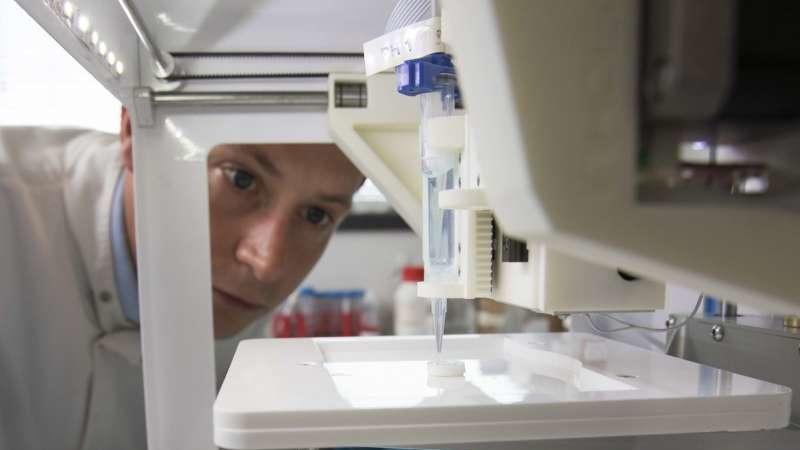cornea
Latest

Scientists create the first 3D-printed human corneas
Newcastle University researchers have devised a groundbreaking experimental technique that could help millions on the corneal transplant waiting list. By using a simple 3D bio-printer, Professor of Tissue Engineering Che Connon and his team of scientists were able to combine healthy corneal stem cells with collagen and alginate (a type of sugar sometimes used in tissue regeneration) to create 'bio-ink' -- a printable solution that enabled them to reproduce the shape of a human cornea in just 10 minutes.

Stem cell therapy restores British man's eyesight
Russell Turnbull, now 38, lost almost all the sight in his right eye after trying to break up a fight and being sprayed with ammonia 15 years ago. The result for him was what's known as Limbal Stem Cell Deficiency, which caused him great pain, the need for therapeutic treatment, and economic dependency. Good news for Russell is that he can put all that behind him now, after becoming one of the first recipients of a new stem cell grafting procedure, whereby healthy tissue from his left eye was implanted into his right and -- just like a video game medpack -- restored his vision to normal. For the moment, this treatment is limited to patients with at least one healthy eye, but given the pluripotent nature of stem cells, it is hoped that tissue from elsewhere in the body could one day be used to regenerate damaged parts, such as the cornea in this case. You may find further enlightenment in the video after the break.

Video: doctors implant tooth into eye, restore sight, creep everyone out
Osteo-odonto-keratoprosthesis. It's a real procedure that really does revive people's ability to see, yet we get the feeling that people will be more, um, excited about how it's done than why it's done. The seemingly Mary Shelley-inspired doctors extract a tooth from a blind person and drill a hole through it, where a prosthetic lens is placed, and the resulting macabre construction is implanted into the blind person's eye. The tooth is necessary as the body would reject an artificial base. It's not at all pretty, and it cannot repair every type of blindness, but it's still a major step forward. To hear from Sharron Thornton, the first American to have undergone the procedure, check the video after the break, but only if you can handle mildly graphic content -- you've been warned. [Via Daily Tech]

Artificial corneas could save eyesight
While there's been no shortage of research surrounding the saving of one's eyesight, the EU-funded CORNEA project has now developed an artificial cornea that is showing promise in trials. Reportedly, scientists at the Fraunhofer Institute for Applied Polymer Research IAP in Potsdam and the Department of Ophthalmology at the University Hospital of Regensburg have created a device that is "based on a commercially available polymer which absorbs no water and allows no cells to grow on it." Put simply, the cornea implant can "firmly connect with the natural part of the cornea, while the center remains free of cells and therefore clear." Apparently, early versions have already been successfully placed in the eyes of rabbits, and if ongoing testing goes smoothly, they'll be headed for humans as early as next year.

